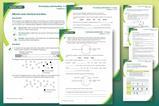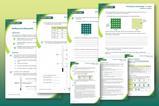Scientists are removing the obstacles for making batteries that are energy dense enough to power planes
Sulfur is cheap, abundant and packs an energy punch, especially for applications where energy density is critical – aviation for example – which makes lithium–sulfur batteries tipped to be stars in the transition to electrification. But Li–S batteries have some major problems.

Researchers at Drexel University, Philadelphia, US, have stumbled across a way to stabilise a different crystal form of sulfur that seems to eliminate many of the headaches facing Li–S batteries.
In Li–S cells the basic reaction at the cathode is positive lithium ions reacting with sulfur to make lithium sulfide. In conventional carbonate electrolytes, polysulfides also form, which react irreversibly with the electrolyte and kill the cell.
By physically constraining the sulfur in a carbon nanofibre, the polysulfides were trapped in the nanofibre and didn’t react with the carbonate electrolyte.
Put this in context
Add context and highlight diverse careers with our short career videos showing how chemistry is making a difference and let your learners be inspired by chemists like Lizzie, a PhD researcher.
When mixed into the carbon nanofibre the sulfur became stabilised in a rare form, known as monoclinic gamma sulfur, compared with the more usual and stable orthorhombic alpha sulfur. Gamma sulfur is usually unstable at room temperature and has a rectangular prism structure formed of eight sulfur atoms packed in a different structure to alpha sulfur’s crown shape.
The research team at Drexel put their carbon nanofibres into a battery cell with a carbonate electrolyte they were able to cycle it 4000 times without losing performance. The gamma sulfur seemed to stop the formation of polysulfides completely. Instead, lithium sulfide formed directly, allowing the battery to work unimpeded.
Read the full story in Chemistry World.
A one-slide summary of this article with questions to use with your 14–16 students: rsc.li/3KsnN6Z
Downloads
EiC starter slide LiS batteries KH
Presentation | PDF, Size 0.17 mbEiC starter slide LiS batteries KH
Presentation | PowerPoint, Size 1.05 mb















No comments yet